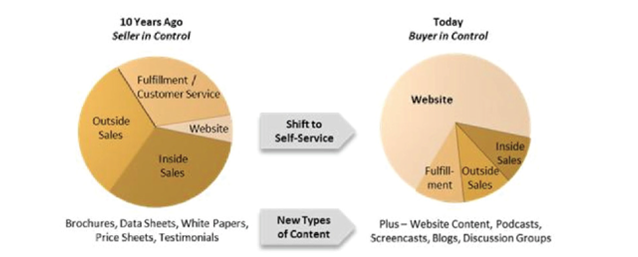31 Dec 4 Online Marketing Solutions to Driving Traffic & Converting Web Leads
YOUR WEBSITE IS MUCH MORE THAN AN ONLINE BROCHURE
We all know how important a website is to a web marketing strategy, but what does it really take to have a great website that drives visitors, leads and revenue? As a web marketing Toronto company, we like to tell our clients that their website is its virtual storefront.
A website is the centerpiece of all your online marketing solutions. Whether you’re looking to build your first website, or if your existing site just isn’t getting the traffic or leads you were hoping for, here is our first article(in a series of four) that guides you on what takes to have a great website.

GET YOUR BUSINESS FOUND ONLINE
A successful website doesn’t just exist, it attracts visitors, educates them and creates the environment them to buy.
Easier said than done.
Today, we now need to integrate search, social media, content, blogging, and more with our online marketing solutions. No more fancy Flash graphics and an expensive advertising campaign to temporarily boost traffic.
Today’s buyer wants to consume information when they want and how they want. More importantly, they want to be educated and not sold to.

A great website isn’t so great if no one visits it. This is why our first article is dedicated to getting found online, which covers the very top of the funnel of your web marketing strategy.
SEARCH ENGINE OPTIMIZATION
Search Engine Optimization (SEO) is an absolute must-have to any website strategy, but it takes hard work and consistency when aiming for the top spot.
Every website on the internet has the goal of reaching the #1 position in search engines but because there is only one top spot per keyword phrase, not everyone can make it. So what gets a first place ranking? Off-page search engine optimization (SEO) is the most important factor to increasing
your ranking results.
Off-Page SEO is about building inbound links, essentially getting other quality websites to link back to you. Search engines call this authority or “link juice.” The more inbound links you have, the more important your site must be, thus the higher you’ll rank.
Link building, when done right, isn’t easy since adding links to other websites is sometimes out of your control. Here are some tips to building inbound links:
- Create high-quality, educational or entertaining content. If people like your content, they will naturally want to link to it.
- Submit your website to online directories. This is an easy way to start.
- Write guest posts for other blogs. This is a win-win for both parties. People will want extra (quality) content from others and in exchange, it’s a great way to build inbound links.
- Researching link building opportunities with other websites, but always check the authority of the websites that you are trying to get links from. There are many tools online that allow you to check domain or page authority, including HubSpot’s link grader tool.
- DON’T borrow, beg, barter, bribe or buy links.
While off-page SEO is hugely important, we can’t forget about on-page SEO. This consists of placing your most important keywords within the content elements of your actual pages. These on-page elements include Headlines, Sub-headlines, Body Content, Image Tags, and Links. Often times on-page SEO is referred to as “keyword density.”
ON-PAGE SEO
It’s very common that businesses will do too little on-page optimization or too much (keyword stuffing). While it’s important to include your keyword as many times as necessary within a page, you don’t want to go overboard with it either. For on-page SEO done right:
- Pick a primary keyword for each page and focus on optimizing that page for that word. If you oversaturate a page with too many keywords on one page, the page will lose its importance and authority because search engines won’t have a clear idea of what the page is about. This is very common on homepages in particular, where too many keywords are used.
- Place your primary keywords in your headline and sub-headline. These areas of content have greater weight to search engines.
- Include the keywords in the body content but don’t use them out of context. Make sure they are relevant with the rest of your content.
- Include keywords in the file name of images (e.g. mykeyword.jpg) or use them in the ALT tag.
- Include the keywords in the page URL and keep the URL clean.
- Write for humans first, search engines second. Always prepare your content for your audience and then look to optimize it for search. Content written in the other order won’t read naturally and your visitors will recognize it.
XML SITEMAPS
The general incentive behind an XML sitemap is to help search engine crawlers (or “spiders”) sift through your pages more efficiently. An XML sitemap is simply an .xml file containing a listing of all your pages and when they were updated. It’s a lot like a subway map. It shows the structure of your website and where are your pages reside.
Creating a sitemap is easy. You can find sitemap generators online that will create the .xml file for you. Once you get the .xml file, simply upload it to the root directory of your website (e.g. www. website.com/sitemap.xml). If you don’t know how, ask your web marketing company to create an XML Sitemap for you.
If your website is updated regularly, make it a good practice to update your xml file at least once a month so search engines have the freshest data.
Adding an XML sitemap is a component that is commonly overlooked, while it may not be the deciding factor in improving your Search Engine
Optimization, it will certainly help.



